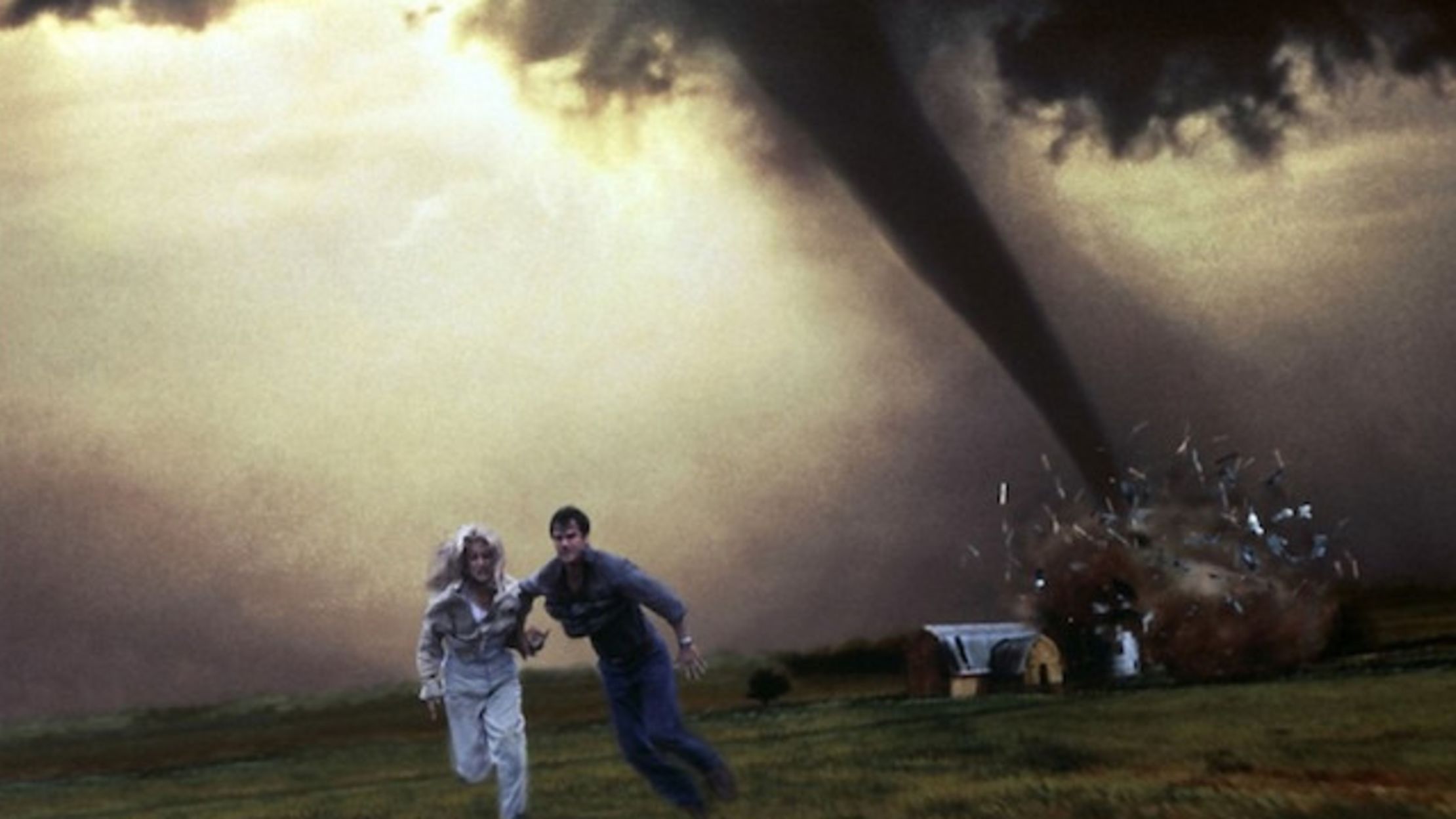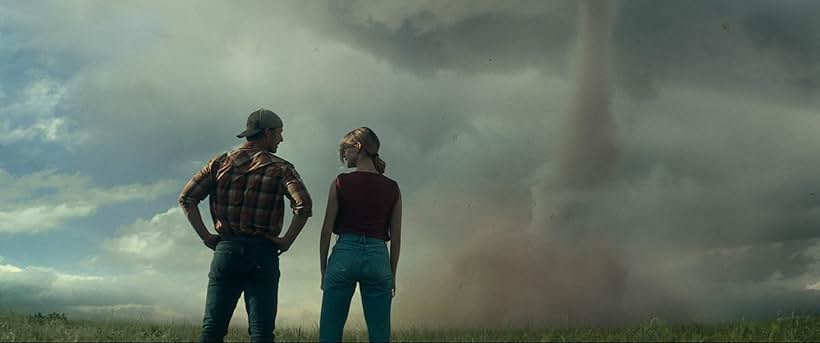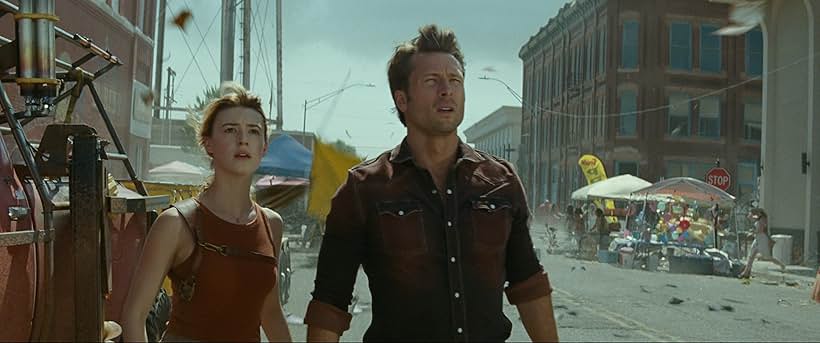Directed by Lee Isaac Chung, ‘Twisters’ introduces us to Kate Cooper, a scientist who stopped chasing tornados after a devastating incident. When her friend pulls her back into the field to test potentially revolutionary equipment, she comes up against someone unexpected. Tyler Owens, a social media star known for his daredevil tornado chasing, beats them to the twister with his reckless tactics but interests Kate with his charisma and spirit.
The two team up to deploy a prototype tool that may be able to tame nature’s fury and disperse twisters. However, their mission proves far more difficult than they imagined as unprecedented tornados of devastating magnitudes threaten to destroy everything in their path. The disaster film sees the battle between unyielding twisters and advanced technology, raising questions about its proximity to science fiction.
Twisters: The Hefty Legacy of its Predeccesor
‘Twisters’ is a standalone sequel to the 1996 classic, ‘Twister,’ and much like its predecessor, roots itself in actual science while fictionalizing and dramatizing many of its elements. The initial film was conceived from the ideas of its producers, Steven Spielberg and Kathleen Kennedy, who wanted to make a movie on twisters but had to wait for the development of digital technology to simulate the storms for a movie. The film crew collaborated with the National Severe Storms Laboratory (NSSL), whose members actually chase tornadoes to collect data. The Dorothy device seen in ‘Twister’ was inspired by TOTO, a 55-gallon drum-like instrument researchers would place in the path of the tornado to get measurements.

Furthermore, the production team was also joined by technical advisors from the NSSL. The cast and crew even received training from them regarding lightning safety for when they would be out filming in the open. Kevin Kelleher, the NSSL Deputy Director at the time, weighed in on the scientific accuracy of scenes and increased the authenticity of the finale by suggesting an outbreak of tornadoes instead of their initial plan of one twister that would last for a day and a half.
The film ended up making a tremendous real-world impact, especially for the NSSL and the field of meteorology. Following its release, OU’s School of Meteorology saw record-breaking enrollment in its graduate and undergraduate courses, becoming one of the top programs in the country. The NSSL was also able to make international connections and work with many of the world’s meteorological institutes through its involvement with the movie.
Closing the Gap Between Science and Sci-Fi
For the filming of the sequel, Chung brought Kevin Kelleher on board as a technical advisor. However, much like the team behind the original, Chung knew that he was not going to stick a hundred percent to scientific accuracy. “With this movie, the endeavor that Kate is on to see if she can disrupt the dynamics of a tornado, this is also based on a lot of science fiction,” Chung said in an interview. “We’re just theorizing, and it’s definitely not something we want people to be doing, but we wanted the film to pay homage to science and research and conducting very big ideas out there.”

Kelleher worked with the writers on the drafts of their scripts, sat through discussions and meetings regarding VFX, and weighed in on the technology depicted in the movie that could theoretically collapse a tornado. His expertise was involved in the functioning and creation of the science fiction device seen in the film, ensuring that it is conceptually rooted in real-world science. The filmmaker wanted to communicate just as much to the audience, with the characters often explaining key terminology and phenomena for our benefit. This can be seen with Javi using butter packets at a café for a demonstration and, later, using the graphical interface on his vehicle to communicate their objectives and situation.
The Unintrusive Environmentalism of Twisters
With the increasing frequency and power of natural disasters in the 21st century, more and more people are becoming aware of the scientific connection between climate change and extreme weather events. Chung wanted to strike a balance between portraying the beauty of nature and its destructive natural phenomena. The film seeks to entertain and inform rather than preach about an impending crisis. It does this by putting its characters in the place of real-life survivors and victims of natural disasters, making us privy to their situation and its real-life threats.

“I definitely didn’t want to be on a soapbox with this film,” said Chung in the aforementioned interview. “I just wanted to set audiences in the reality of what’s happening with tornadoes and tornado outbreaks these days, the unpredictability and the greater number of outbreaks that are actually happening right now.” ‘Twisters’ acknowledges the scientific realities of tornadoes and the environmental implications associated with them, focusing on creating an entertaining and spectacular experience leaning towards plausible science fiction.
Read More: Best Disaster Movies on Netflix


You must be logged in to post a comment.